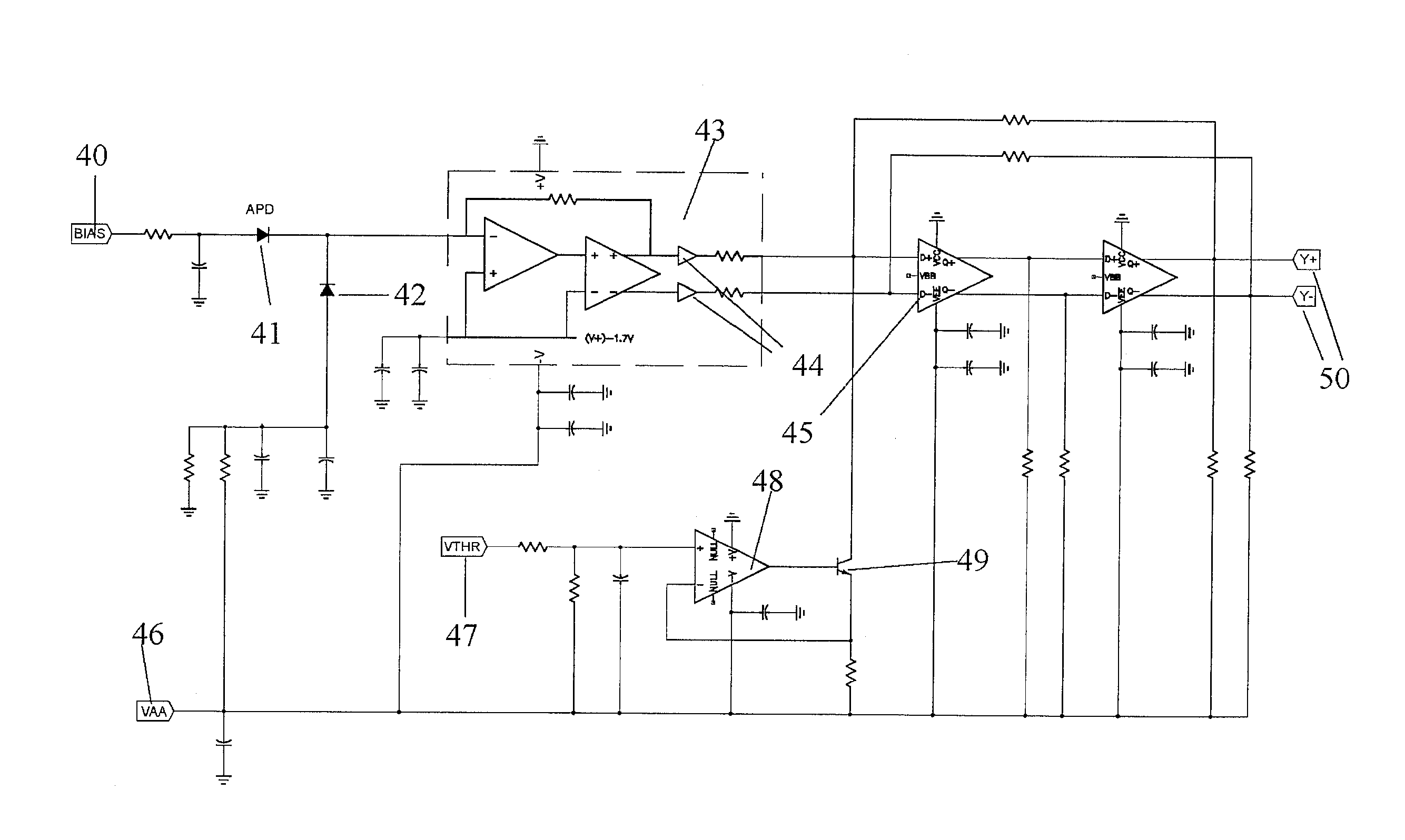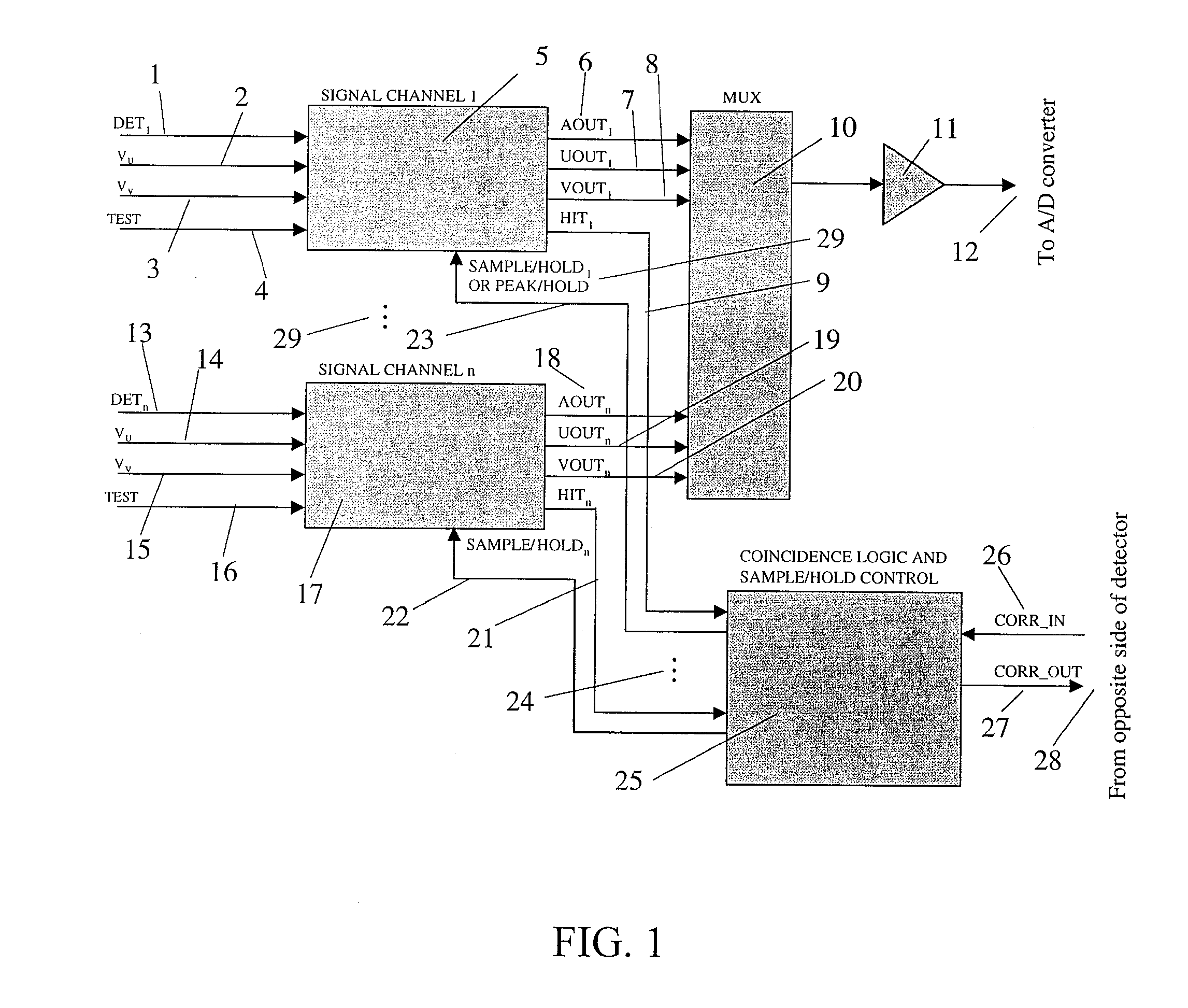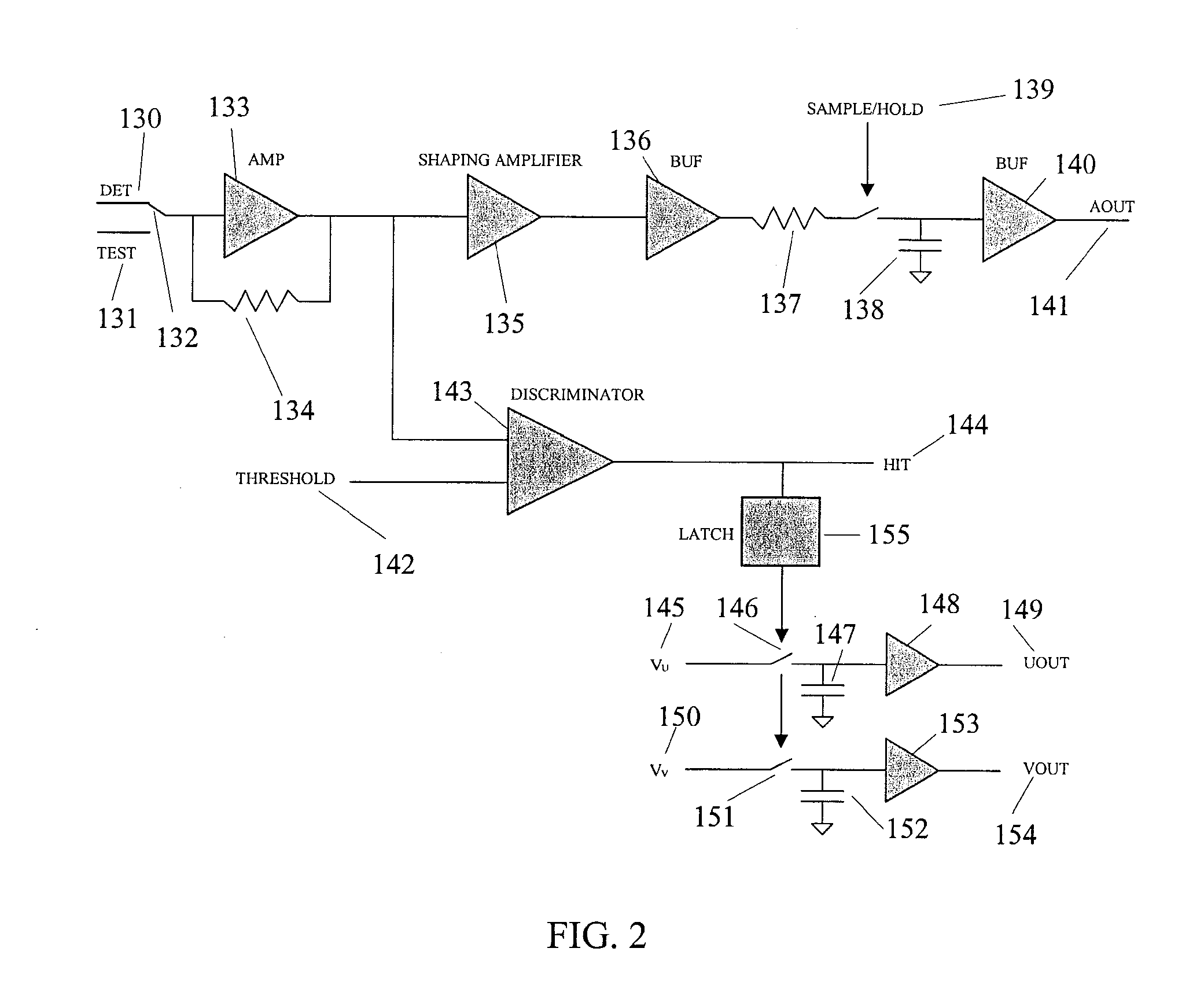X-Ray and Gamma Ray Detector Readout Sytem
a detector and readout technology, applied in the field of detectors and readout electronics, can solve the problems of unfavorable radiation detection, unfavorable radiation detection, and limited diagnostic accuracy of the technique for detecting cancer, and achieve the effects of high efficiency, uniform spatial resolution, and relative insensitivity to magnetic fields
- Summary
- Abstract
- Description
- Claims
- Application Information
AI Technical Summary
Benefits of technology
Problems solved by technology
Method used
Image
Examples
Embodiment Construction
[0052]There has been considerable interest in recent years in developing dedicated high resolution positron emission tomography (PET) systems for applications in breast cancer imaging and small-animal imaging. The goal in these systems is to achieve much higher spatial resolution and sensitivity for specific tasks than is possible with whole-body PET scanners designed for general purpose use. A second goal is to produce relatively inexpensive, compact and easy to use systems that make PET more accessible. Generally, these dedicated systems use small scintillator elements read out by position-sensitive or multi-channel PMTs. In most systems, some form of signal multiplexing is used to reduce the number of channels to a manageable number. Since the predominant mode of interaction at 511 keV in all scintillators currently used for PET is Compton scatter, multiplexing can lead to significant loss of position information. Furthermore, depth-of-interaction (DOI) blurring or radial elongat...
PUM
 Login to View More
Login to View More Abstract
Description
Claims
Application Information
 Login to View More
Login to View More - R&D
- Intellectual Property
- Life Sciences
- Materials
- Tech Scout
- Unparalleled Data Quality
- Higher Quality Content
- 60% Fewer Hallucinations
Browse by: Latest US Patents, China's latest patents, Technical Efficacy Thesaurus, Application Domain, Technology Topic, Popular Technical Reports.
© 2025 PatSnap. All rights reserved.Legal|Privacy policy|Modern Slavery Act Transparency Statement|Sitemap|About US| Contact US: help@patsnap.com



